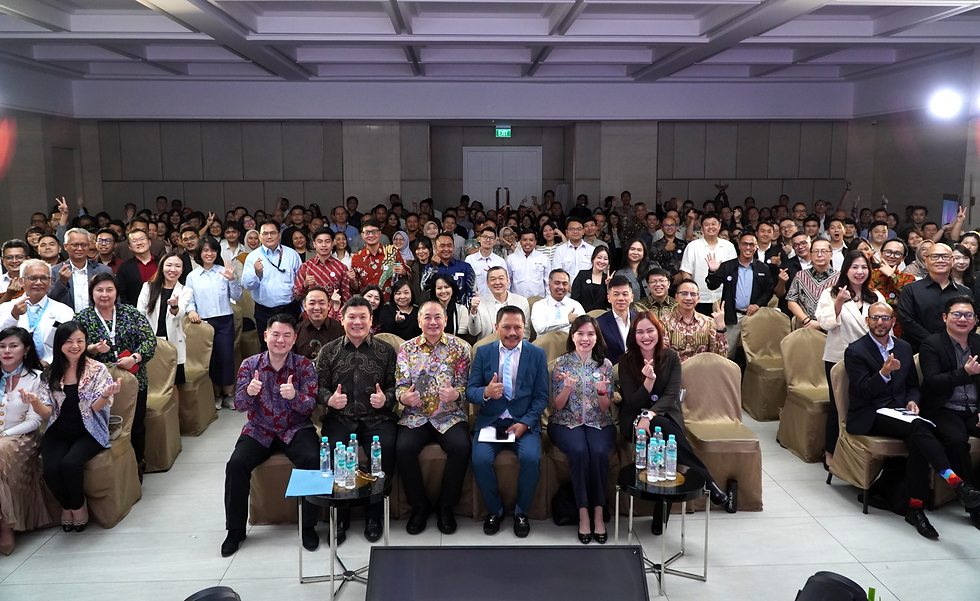Navigating the Future: A Guide to Your Success in the Age of Generative AI
- TechConnect

- Jan 5, 2024
- 3 min read

Picture source: GettyImages
If there's one fundamental rule when it comes to embracing new technologies, it's this: individuals will employ digital tools in ways that can't be entirely predicted or controlled. The adoption of generative AI brings about challenges more complex than those posed by previous digital solutions, for two key reasons. Firstly, ChatGPT stands out as one of the most widely adopted products in history, spreading rapidly. Secondly, unlike almost any other familiar digital technology, AI-enabled tools are programmed to evolve autonomously – constantly changing. Thanks to the continuous autonomous learning inherent in advanced AI-based tools, you're not just adapting to a new technology once – you're adapting almost every time you interact with it.
Several companies have already embraced the STEP framework, and from an employee's perspective, their initial encounters reveal that it fulfills three crucial requirements: It enables employees to actively contribute to defining their new duties. It grants leaders the ability to redistribute tasks and rethink job roles in manners that enhance the company's value. Additionally, it offers a means to cope with the emerging reality that technological advancements are no longer occasional events but an ongoing force that both organizations and their employees must navigate consistently.
1. Segmentation
As an employee, it's crucial to recognize that no single AI can replicate all facets of your job. Take a thoughtful approach by asking yourself, "How will AI influence the different tasks I perform?" To assess this, categorize tasks into three groups: (1) tasks that AI either cannot or should not handle, (2) tasks where AI can enhance your actions, and (3) tasks that AI can automate. Identify which aspects of your job AI could assist you with, and then specify tasks that could be fully automated. For example, consider the laborious task of sending emails to external parties for contract amendments. AI has the potential to simplify this process by automatically generating emails based on an analysis of revised contract language.
2. Transition
As AI accelerates and improves work tasks through augmentation or takes over some entirely through automation, it's expected that certain employees may face a reduction in workload. Some companies might contemplate downsizing their workforce as a result. However, among the 10 companies I investigated, only one chose to reduce jobs due to the efficiencies gained from augmenting and automating tasks. More frequently, from the employees' viewpoint, two alternative strategies were employed: transitioning work roles by either deepening or upgrading them. Deepening roles allowed employees to dedicate more time to specific tasks than previously. On the flip side, upgrading roles freed them from certain tasks entirely, offering more significant responsibilities in return.
3. Education
Companies emphasizing education had a shared perspective from the employees' standpoint. Initially, they fostered a culture that embraced continuous learning. Leaders and managers at all levels depicted AI as an opportunity for ongoing learning, relieving employees of the expectation to be AI experts or seamlessly integrate it into their tasks. Instead, employees were urged to explore AI's capabilities and take the time to discover optimal ways to incorporate it into their work. Additionally, these companies dedicated time for employees to engage in the learning opportunities provided. This shift towards continuous education for employees also yielded extra benefits. In one instance from the study, employees with learning opportunities tied to the introduction of generative AI tools were approximately 30% less likely to leave the organization compared to those without such opportunities.
4. Performance
In the concluding stage of the STEP framework, employees are encouraged to reassess how they evaluate their own performance. Typically, assessments focus on the speed, efficiency, creativity, or accuracy of completing specific tasks, and discussions about the impact of AI often center around increased productivity. However, with STEP, employees are empowered to determine if they can utilize AI to improve their speed or accuracy. This shift resulted in various modifications to performance evaluations across the companies I examined. The segmentation and swift transitions changed expectations regarding the tasks employees should prioritize and how they should approach them. Since roles underwent frequent changes throughout the year, rendering objectives set at the beginning of a performance period often irrelevant, the traditional annual performance evaluations lost their effectiveness.
Source: Harvard Business Review





Comments